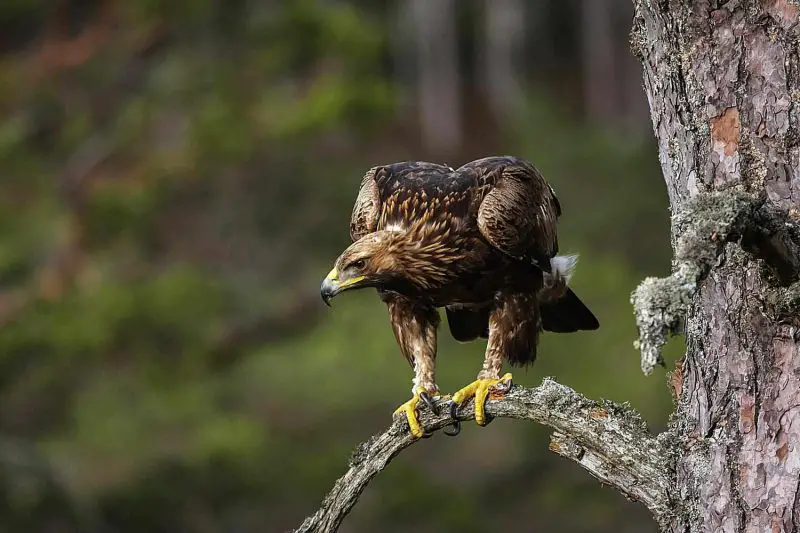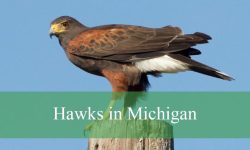If you’ve ever spotted a massive bird soaring gracefully over the Mississippi River or perched majestically on a cypress tree, chances are you’ve encountered one of the state’s impressive eagles. Mississippi, with its vast wetlands, lakes, and forests, provides ideal habitats for these magnificent raptors. Though only two eagle species are regularly observed here, their presence symbolizes strength, wilderness, and recovery.
This detailed guide covers the two types of eagles found in Mississippi, complete with identification tips, behaviors, and the best locations to spot them. Whether you’re a birdwatcher or simply a nature enthusiast, this article will help you recognize and appreciate these powerful birds of prey.
Bald Eagle (Haliaeetus leucocephalus)

The Bald Eagle, America’s national bird, is the most common eagle found throughout Mississippi. It is instantly recognizable by its snow-white head and tail that contrast sharply with its dark brown body and wings. Adults display bright yellow beaks and eyes, while juveniles appear mostly brown with irregular white mottling until they reach maturity around five years of age.
Identification and Appearance
Bald Eagles are among the largest raptors in North America, with a wingspan of 6 to 7.5 feet and weighing between 8 and 14 pounds. Their strong, hooked beaks are adapted for tearing flesh, and their powerful talons enable them to catch and carry large fish. When flying, their broad wings are held flat, and their large, fan-shaped tails help them steer gracefully through the air.
From a distance, the adult’s distinctive white head is the easiest way to identify the Bald Eagle. Juveniles, however, are often mistaken for Golden Eagles because of their dark plumage and similar size. Over several years, their feathers gradually transition to the iconic adult coloration.
Habitat and Range in Mississippi
Bald Eagles thrive in areas with large bodies of water, which provide abundant fish and tall trees for nesting. In Mississippi, they are most commonly seen around Grenada Lake, Sardis Lake, Enid Lake, the Ross Barnett Reservoir, and along the Mississippi River floodplains. These environments offer excellent hunting and nesting conditions, particularly during the winter months.
Although Bald Eagles can be seen year-round in Mississippi, their numbers peak in winter when northern populations migrate south. Many stay through early spring before returning to breeding grounds farther north. Some resident pairs, however, live and nest in Mississippi year-round, especially in the Delta region and along major waterways.
Behavior and Diet
Bald Eagles are opportunistic feeders, with fish making up the majority of their diet. They are expert hunters that swoop down to snatch fish from the surface of the water. However, they are also skilled scavengers, often feeding on carrion or stealing prey from other birds such as ospreys.
These eagles are solitary hunters but form loose congregations during the winter where food sources are abundant. They are known for their breathtaking aerial displays during courtship, performing cartwheels and dives while locking talons mid-air.
Nesting Habits
Bald Eagles build some of the largest nests in the bird world—massive structures made of sticks, moss, and grass, often reused and expanded each year. Nests are usually placed high in tall trees near water, though sometimes they choose cliffs or man-made structures. A typical nest can measure up to 8 feet wide and 13 feet deep, weighing over 1 ton after several seasons of use.
The female usually lays one to three eggs, and both parents share incubation duties. Chicks hatch after about 35 days and fledge around 10 to 12 weeks later. Mississippi’s mild climate and abundant fish populations make it an ideal breeding ground for these majestic birds.
Conservation and Recovery
Once critically endangered due to habitat destruction and pesticide poisoning (especially from DDT), the Bald Eagle has made an inspiring recovery. It was removed from the U.S. Endangered Species List in 2007. Mississippi now supports a healthy and growing population, thanks to conservation programs and legal protection under the Bald and Golden Eagle Protection Act.
Winter eagle counts have steadily increased, and sightings are now common at state parks and wildlife refuges. The Noxubee National Wildlife Refuge is one of the best places to observe Bald Eagles year-round, as several nesting pairs live within the area.
Golden Eagle (Aquila chrysaetos)

The Golden Eagle is the second species found in Mississippi, though it is far less common than the Bald Eagle. It is primarily a winter visitor, migrating from the northern U.S. and Canada to spend the colder months in the state. Despite its rarity, a glimpse of a Golden Eagle soaring over Mississippi’s open hillsides or river valleys is an unforgettable experience.
Identification and Appearance
Golden Eagles are massive raptors with long, broad wings and a slightly smaller head compared to the Bald Eagle. Adults have dark brown plumage with golden feathers on the back of the neck and head—hence their name. Unlike Bald Eagles, both adults and juveniles maintain this golden-brown appearance throughout life, though immature birds often have white patches at the base of the tail and on the wings.
They have an impressive wingspan of 6 to 7.5 feet and typically weigh between 7 and 13 pounds. Their powerful talons and keen eyesight make them expert hunters capable of taking down prey larger than themselves. In flight, they are graceful and steady, often soaring for long periods without flapping.
Habitat and Range in Mississippi
Golden Eagles prefer open countryside, upland forests, and hilly terrain where they can hunt effectively. In Mississippi, they are most often recorded in the northern and central regions during the winter months, particularly around areas with large tracts of forest and open fields.
Unlike Bald Eagles, Golden Eagles avoid dense wetlands and prefer areas with minimal human disturbance. Notable sightings have been reported in Noxubee National Wildlife Refuge, Mississippi Sandhill Crane National Wildlife Refuge, and parts of Tishomingo County.
Golden Eagles are extremely secretive, which contributes to their rarity in sighting reports. They are silent most of the year, except during breeding or territorial disputes.
Behavior and Diet
Golden Eagles are primarily hunters, preying on mammals such as rabbits, squirrels, groundhogs, and occasionally young deer. They are also opportunistic and may feed on carrion when available. Using their incredible eyesight, they can spot prey from miles away, then dive at speeds exceeding 150 miles per hour to capture it.
Unlike Bald Eagles, which often gather near lakes and rivers, Golden Eagles prefer isolated areas. They usually hunt alone or in pairs and are known for their stealth and precision. Their agility and strength make them one of the most efficient hunters among birds of prey.
Nesting and Breeding
Golden Eagles typically breed in mountainous or hilly regions far from human activity. They construct large stick nests on cliffs or in tall trees. While Mississippi does not host breeding populations, migrating individuals may occasionally rest or build temporary platforms during the winter season.
Their nests are reused annually, and each season, the pair may add new materials, increasing the nest’s size over time. Females usually lay two eggs, with incubation lasting about 45 days. Although both chicks may hatch, often only the stronger one survives due to sibling rivalry and limited food supply.
Conservation and Status
Golden Eagles are protected under the Bald and Golden Eagle Protection Act and the Migratory Bird Treaty Act. Their population remains stable across North America, although habitat loss and human encroachment remain ongoing threats. Because Mississippi lies near the southern edge of their winter range, these birds are considered rare but valuable components of the state’s ecosystem.
Birdwatchers fortunate enough to see a Golden Eagle in Mississippi often describe it as a highlight of their wildlife experience. Their silent strength and unmatched hunting skill embody the wild spirit of the state’s landscapes.
Best Places to See Eagles in Mississippi
Eagles are majestic year-round residents and visitors in Mississippi, but your chances of seeing them increase significantly during the winter months (December through February). Here are a few of the best spots for eagle viewing:
- Noxubee National Wildlife Refuge – Home to nesting Bald Eagles and a few wintering Golden Eagles. Offers designated observation points.
- Grenada Lake and Enid Lake – Popular Bald Eagle wintering sites, with frequent sightings near dam areas and open water.
- Ross Barnett Reservoir – A large body of water near Jackson that supports several resident Bald Eagles.
- Mississippi Sandhill Crane National Wildlife Refuge – Occasionally visited by Golden Eagles during winter.
- Sardis Lake and Arkabutla Lake – Known for Bald Eagle nesting activity and reliable winter sightings.
Bring binoculars or a spotting scope and visit early in the morning when eagles are most active. Look for large silhouettes perched on snags or soaring high in the sky.
How to Identify Eagles in Mississippi
If you’re unsure which eagle you’ve spotted, a few key features can help distinguish them:
- Bald Eagle: White head and tail (adults), yellow beak, large size, found near lakes or rivers.
- Golden Eagle: Golden-brown head and neck, no white head, feathered legs, prefers uplands and open areas.
Juvenile Bald Eagles can be tricky to identify since they resemble Golden Eagles. One good clue is habitat—Bald Eagles are usually near water, while Golden Eagles favor higher, drier terrain.
Eagle Behavior in Mississippi
Eagles are known for their incredible intelligence, strong pair bonds, and territorial behavior. Both Bald and Golden Eagles mate for life and return to the same nesting area year after year. During courtship, pairs perform aerial acrobatics—spiraling and locking talons mid-air before separating dramatically.
Bald Eagles are often vocal, producing high-pitched whistles and chatters, while Golden Eagles are mostly silent, communicating primarily through body language. Both species demonstrate excellent parental care and fierce protection of their nests.
During winter, it’s common to see Bald Eagles congregating near reservoirs where fish are plentiful. They often roost together in large trees during cold nights, conserving energy and staying protected from predators.
Conservation Efforts in Mississippi
Mississippi has made tremendous progress in eagle conservation over the past few decades. Organizations such as the Mississippi Department of Wildlife, Fisheries, and Parks (MDWFP), along with national partners, have worked tirelessly to restore eagle populations through habitat preservation, monitoring, and public education.
The banning of DDT in 1972 and the legal protection of eagle nests have led to a dramatic recovery of Bald Eagles across the state. The Mississippi Eagle Count Program, launched in the 1980s, continues to track populations annually and report trends in nesting activity.
Golden Eagles benefit indirectly from these conservation actions, as preserved habitats and large protected areas also provide safe wintering grounds for them.
Tips for Watching Eagles in Mississippi
Observing eagles in the wild is both thrilling and humbling. Here are a few tips for an enjoyable and ethical birdwatching experience:
- Use binoculars or a spotting scope to maintain a safe distance from nests and roosts.
- Visit early mornings or late afternoons, when eagles are most active.
- Stay quiet and still—sudden movements can disturb them.
- Avoid approaching nests during the breeding season (January–April).
- Bring a camera with a zoom lens if you want photos without disturbing the birds.
Winter eagle-watching festivals and ranger-led tours are also popular in Mississippi, offering excellent opportunities to learn more about these magnificent raptors.
FAQs About Eagles in Mississippi
How many Bald Eagles live in Mississippi?
Hundreds of Bald Eagles winter in Mississippi each year, with dozens of confirmed nesting pairs now residing year-round. Their population continues to rise steadily thanks to ongoing conservation.
Are Golden Eagles found year-round in Mississippi?
No. Golden Eagles are winter visitors. They migrate south from the northern U.S. and Canada and typically depart by early spring.
Where can I see Bald Eagles in Mississippi?
Some of the best eagle-watching sites include Grenada Lake, Ross Barnett Reservoir, Enid Lake, and the Noxubee National Wildlife Refuge.
What do eagles eat in Mississippi?
Bald Eagles primarily eat fish, while Golden Eagles hunt small mammals such as rabbits and squirrels. Both may feed on carrion when available.
Do Bald Eagles nest in Mississippi?
Yes. Bald Eagles now have several nesting sites across northern and central Mississippi, especially near major lakes and river systems.
Are eagles protected in Mississippi?
Yes. Both Bald and Golden Eagles are protected by federal law under the Bald and Golden Eagle Protection Act, making it illegal to disturb or harm them or their nests.
Final Thoughts
Mississippi’s diverse habitats make it a wonderful place to observe eagles in the wild. The Bald Eagle stands as a powerful symbol of recovery and freedom, while the Golden Eagle adds a touch of wilderness mystery to the state’s skies. Together, they represent the enduring strength and resilience of nature.
Whether you’re standing on the banks of the Mississippi River or exploring the quiet backwaters of a reservoir, look up—you might just catch sight of one of these majestic eagles soaring effortlessly overhead.






